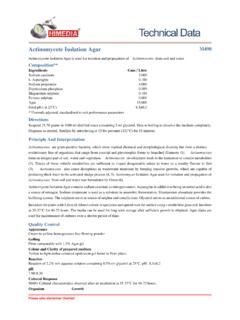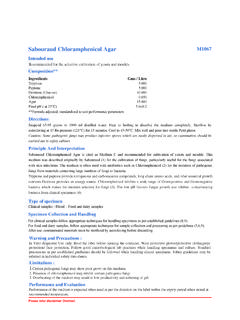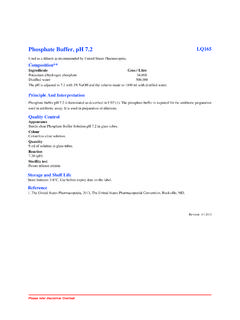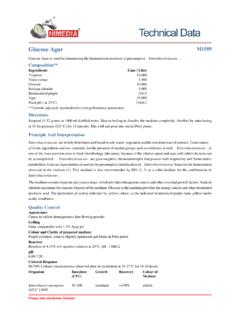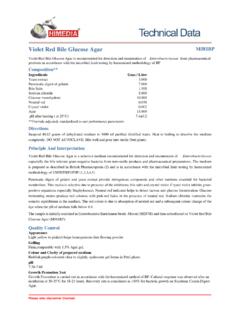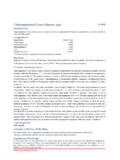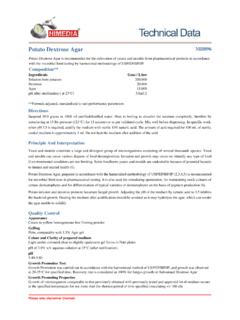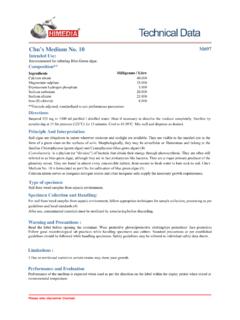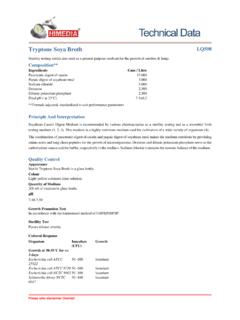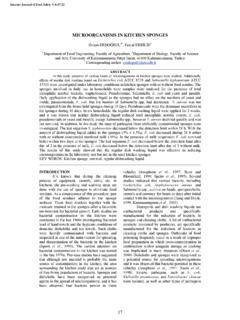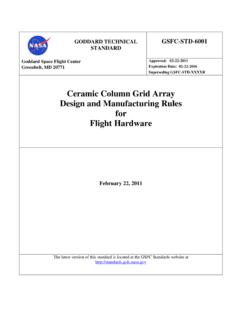Transcription of Potato Dextrose Agar w/Chloramphenicol - HiMedia Labs
1 Potato Dextrose agar w/ chloramphenicol M1941. Potato Dextrose agar is recommended for the selective isolation and enumeration of yeasts and moulds from dairy and other food products. Composition**. Ingredients Gms / Litre Potatoes, infusion from Dextrose agar chloramphenicol Final pH ( at 25 C) **Formula adjusted, standardized to suit performance parameters Directions Suspend grams in 1000 ml distilled water. Heat to boiling to dissolve the medium completely. Sterilize by autoclaving at 15lbs pressure (121 C) for 15 minutes. Mix well before dispensing. In specific work, when pH is required, acidify the medium with sterile 10% tartaric acid.
2 The amount of acid required for 100 ml. of sterile, cooled medium is approximately 1. ml. Do not heat the medium after addition of the acid. Principle And Interpretation Potato Dextrose agar is recommended by APHA (1) and (2) for plate counts of yeasts and moulds in the examination of foods and dairy products (3). Potato Dextrose agar is also used for stimulating sporulation, for maintaining stock cultures of certain dermatophytes and for differentiation of typical varieties of dermatophytes on the basis of pigment production (4). Potato Dextrose agar with chloramphenicol is recommended for the selective isolation of fungi. Potato infusion and Dextrose promote luxuriant fungal growth.
3 Adjusting the pH of the medium by tartaric acid to , inhibits the bacterial growth. Heating the medium after acidification should be avoided as it may hydrolyse the agar which can render the agar unable to solidify. chloramphenicol inhibits a wide range of Gram-positive and Gram-negative bacteria which makes the medium selective for fungi (5). Quality Control Appearance Cream to yellow homogeneous free flowing powder Gelling Firm, comparable with agar gel Colour and clarity of prepared medium Light amber coloured clear to slightly opalescent gel forms in Petri plates Reaction pH of w/v aqueous solution at 25 C. pH : pH. Cultural Response Cultural Response was observed at 20-25 C for 2-7 day's.
4 Recovery rate is considered as 100% for fungus growth on Sabouraud Dextrose agar Cultural Response Organism Inoculum Growth Recovery (CFU). Cultural Response Please refer disclaimer Overleaf. HiMedia Laboratories Technical Data Aspergillus brasiliensis 50-100 good-luxuriant ATCC 16404. Candida albicans ATCC 50-100 good-luxuriant >=50%. 10231. Escherichia coli ATCC >=10 inhibited 0%. 25922. Lactobacillus casei ATCC >=10 inhibited 0%. 334. Saccharomyces cerevisiae 50-100 good-luxuriant >=50%. ATCC 9763. Trichophyton rubrum ATCC 50-100 good-luxuriant 28191. Escherichia coli NCTC 9002 >=10 inhibited 0%. Escherichia coli ATCC 8739 >=10 inhibited 0%.
5 Storage and Shelf Life Store between 15-25 C in tightly closed container and the prepared medium at 2-8 C. Use before expiry date on the label. Reference F. P. and Ito K., (Eds.), 2001, Compendium of Methods for the Microbiological Examination of Foods, 4th Ed., APHA, Washington, Bacteriological Analytical Manual, 2005, 18th Ed., AOAC, Washington, DC. H. M. and Frank J. H., 2004, Standard Methods for the Microbiological Examination of Dairy Products, 17th Ed., APHA Inc., Washington, J. F., 1985, Media for the Isolation-Cultivation-Identification-Mai ntenance of Medical Bacteria, , Williams and Wilkins, Baltimore (Ed.),1980, Antibiotics In Laboratory Medicine, Williams and Wilkins, Baltimore Revision : 0 / 2013.
6 Disclaimer : User must ensure suitability of the product(s) in their application prior to use. Products conform solely to the information contained in this and other related HiMedia publications. The information contained in this publication is based on our research and development work and is to the best of our knowledge true and accurate. HiMedia Laboratories Pvt Ltd reserves the right to make changes to specifications and information related to the products at any time. Products are not intended for human or animal or therapeutic use but for laboratory,diagnostic, research or further manufacturing use only, unless otherwise specified.
7 Statements contained herein should not be considered as a warranty of any kind, expressed or implied, and no liability is accepted for infringement of any patents. HiMedia Laboratories Pvt. Ltd. A-516,Swastik Disha Business Park,Via Vadhani Ind. Est., LBS Marg, Mumbai-400086, India. Customer care No.: 022-6147. 1919 Email: Website.
